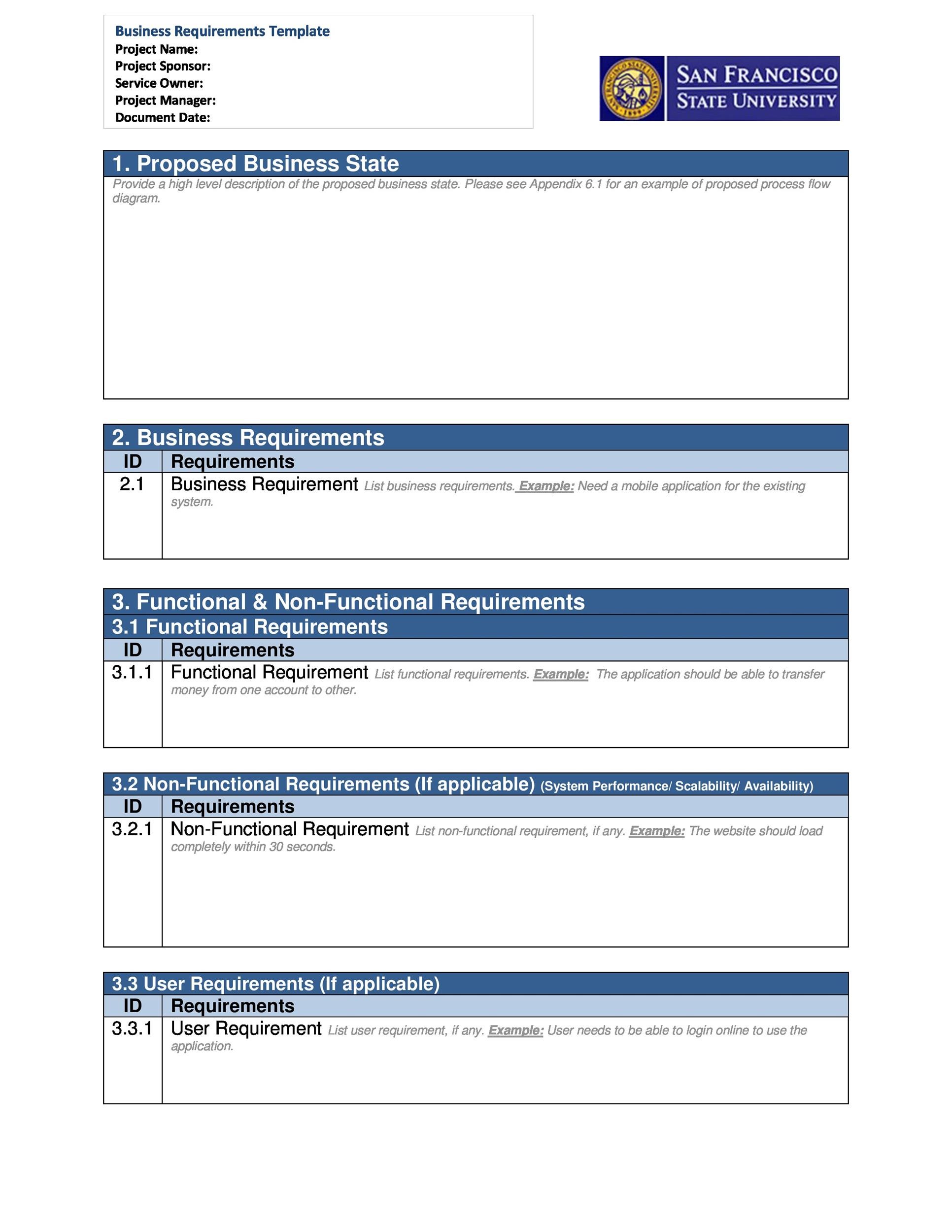A high level requirements template is a document that outlines the key objectives and constraints of a project. It is a high-level view of the project’s purpose, scope, and success criteria. This template is used to communicate the project’s vision and goals to stakeholders and to ensure that everyone is on the same page.
High level requirements templates are typically used in the early stages of project planning. They are often created by business analysts or project managers. The template can be used to gather input from stakeholders and to develop a shared understanding of the project’s goals. Once the high level requirements are defined, they can be used to create more detailed requirements documents, such as functional specifications and system requirements specifications.

What are the Key Components of a High Level Requirements Template?
A high level requirements template typically includes the following components:
- Project Overview: This section provides a brief overview of the project, including its purpose, scope, and key stakeholders.
- Project Objectives: This section lists the specific objectives that the project must achieve. These objectives should be clear, measurable, and achievable.
- Project Constraints: This section identifies any constraints that the project must operate within, such as budget, time, and resources.
- Assumptions and Dependencies: This section lists any assumptions that the project team is making, as well as any dependencies that the project has on other projects or teams.
- Success Criteria: This section defines the criteria that will be used to measure the success of the project. These criteria should be specific, measurable, achievable, relevant, and time-bound.
The specific components of a high level requirements template may vary depending on the project and the organization. However, these core components are typically included in most templates.
Benefits vs Templates
Using a high level requirements template offers several benefits, including:
- Improved communication: A high level requirements template helps to communicate the project’s vision and goals to stakeholders. This can help to ensure that everyone is on the same page and that the project is aligned with the organization’s strategic objectives.
- Reduced risk: A high level requirements template can help to identify and mitigate project risks. By defining the project’s objectives, constraints, and dependencies, the project team can better understand the potential challenges and risks that the project may face.
- Improved efficiency: A high level requirements template can help to streamline the project planning process. By providing a structured framework for gathering and documenting requirements, the project team can save time and effort.
Overall, a high level requirements template is a valuable tool that can help project teams to define the project’s scope, objectives, and constraints. By using a template, project teams can improve communication, reduce risk, and improve efficiency.
Conclusion
A high level requirements template is a powerful tool that can help project teams to define the project’s vision and goals. By using a template, project teams can improve communication, reduce risk, and improve efficiency. When using a high level requirements template, it is important to involve all stakeholders in the process and to ensure that the template is tailored to the specific needs of the project.
High level requirements templates are an essential tool for project planning. They help to ensure that projects are aligned with the organization’s strategic objectives and that they are achievable within the project’s constraints. By using a high level requirements template, project teams can increase their chances of success.
